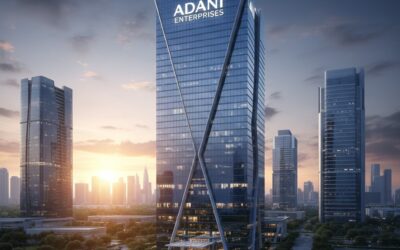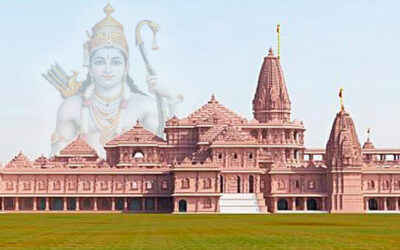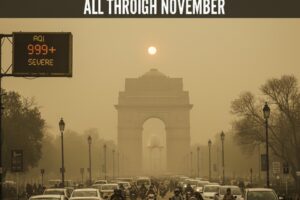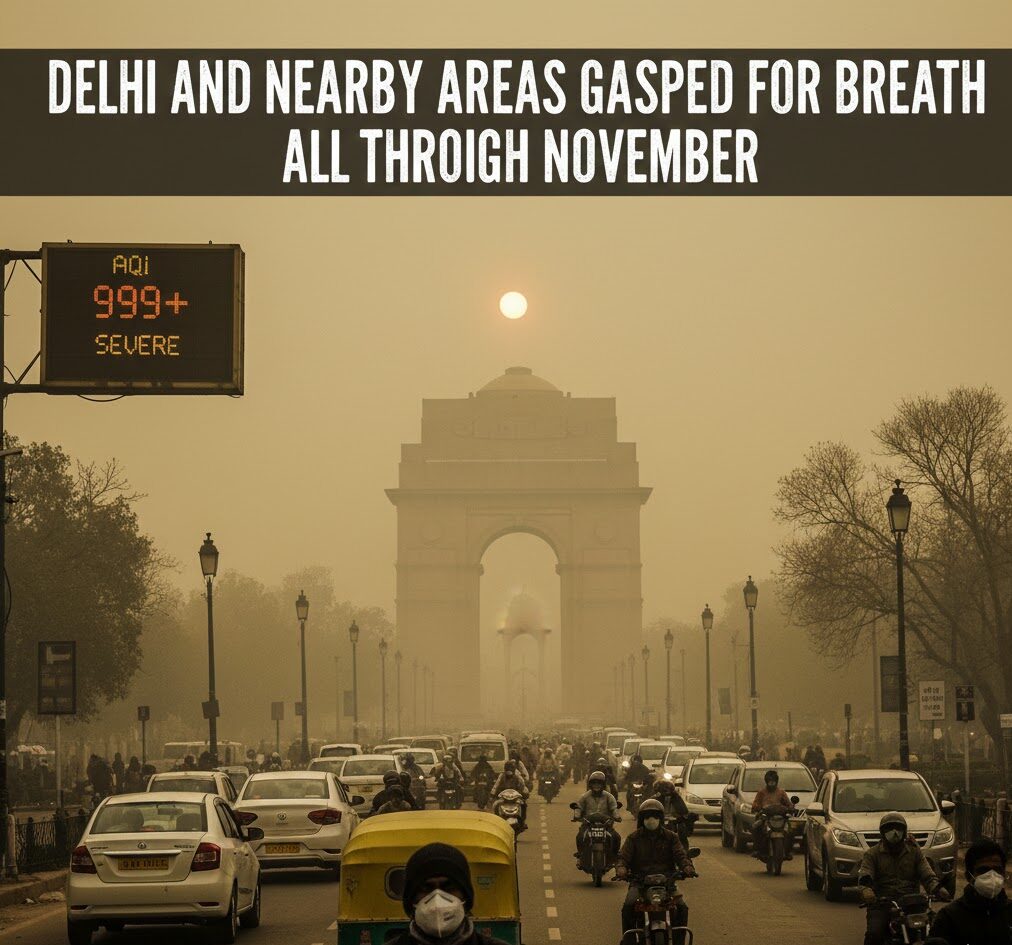🌫️ Air Emergency: Delhi and Nearby Areas Gasped for Breath All Through November
November 2025 will be remembered as one of the darkest months for Delhi and its surrounding NCR (National Capital Region). Instead of crisp winter mornings, residents woke up to thick blankets of smog, burning eyes, and a constant struggle to breathe. The city, already infamous for its pollution, faced an air emergency that pushed millions into survival mode.
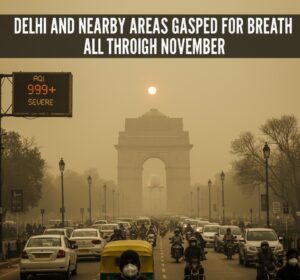
📉 The Scale of the Crisis
For weeks, Delhi’s Air Quality Index (AQI) remained in the “severe” category, often crossing 400–700 in several areas. To put this into perspective:
AQI above 400 is considered hazardous for all age groups.
In some pockets, AQI touched 734, making the air nearly unbreathable.
PM2.5 concentrations were recorded at nearly 20 times the WHO safe limit, meaning every breath carried toxic particles deep into the lungs.
Doctors compared living in Delhi during November to smoking 15–20 cigarettes a day, even for those who never touched tobacco.
🌍 A Rare Global Factor: Volcanic Ash
While Delhi’s pollution is usually blamed on stubble burning, vehicular emissions, and industrial activity, this November saw an unusual contributor: volcanic ash from Ethiopia’s Hayli Gubbi eruption. Winds carried fine ash particles across continents, worsening the already toxic mix in India’s capital.
This rare event highlighted how global environmental changes can directly impact local health crises.
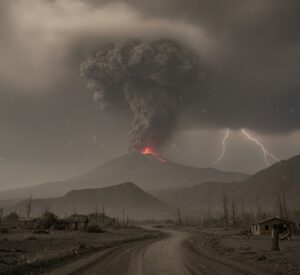
🚨 The Human Cost
Behind the numbers were millions of stories of struggle:
Children: Schools up to Class 5 were shut, and online classes resumed. Parents worried about their kids’ long-term lung health.
Elderly citizens: Many were confined indoors, missing their daily walks or temple visits.
Street vendors: Small businesses suffered as fewer people ventured outdoors.
Patients: Hospitals reported a surge in respiratory and cardiac cases, with doctors warning even healthy lungs were at risk.
One Delhi resident described the city as a “gas chamber”, a phrase that quickly spread across social media as people shared images of disappearing skylines and masked faces.
🧪 Health Warnings from Experts
Doctors and health experts issued stark warnings:
Even healthy individuals were at risk of lung inflammation.
Patients with asthma, COPD, or heart disease were advised to leave the city if possible.
Masks offered limited protection against fine particulate matter.
Long-term exposure could lead to chronic respiratory illness, reduced immunity, and cardiovascular complications.
#The Right to Breathe
November 2025 will go down in history as the month when Delhi and NCR gasped for breath. The smog may eventually lift, but the memory of burning lungs, masked faces, and shuttered schools should push us toward lasting solutions.
Clean air is not a luxury—it is a fundamental right. Unless governments, industries, and citizens act together, Delhi’s November could become a preview of the future for many cities across the globe.
Edited by Shaurya Arora





